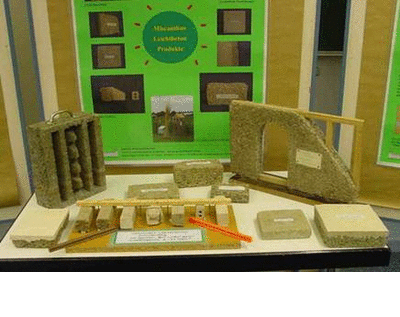WP6
WP6: Miscanthus biomass for added value uses and novel bioproducts
WP-Leader: WU – Luisa Trindade
WP-Team: UHOH IBERS, ILVO, Blankney
Goal: Identify high-yielding Miscanthus sinensis genotypes with biomass of excellent quality for biobased products: bioethanol, BtL, fiber boards, building materials, heat and power.
Objectives:
- Characterize the quality of biomass for the production of different biobased products, in various biorefinery chain.
- Evaluate the influence of different harvest regimes on the quality of miscanthus biomass.
- Assess the impact of abiotic stresses on the quality of biomass.
- Assess the influence of climatic conditions and geographic location on quality of Miscanthus biomass.
WP6 Work description


WP6 progress so far
The WP6 objective is to identify high-yielding Miscanthus genotypes which produce biomass of excellent quality for different added-value uses and which are optimal for multiple plant-derived bioproducts.
The suitability of biomass from the different miscanthus genotypes for biobased products including biogas production, combustion quality and saccharification yield (WP6) was also assessed. The cell wall composition of a large fraction of the project’s germplasm has been characterized. Three new field trials were established and studied for the interplays between cell wall composition, saccharification yield, combustion quality, biogas yield and cutting tolerance of the different miscanthus genotypes. Additionally the effects of abiotic stresses and geographic location on biomass quality are being studied using the harvested material from the multi-location trials (WP4) and the abiotic stress tests (WP3). Both a large genotypic variation in quality traits and a strong environment effect on genotype performance have been observed.
Important outcomes of WP6 will include identification of genotypes with superior performance for different aspects of biomass quality, ranging from biogas, bioethanol production or combustion to novel bioproducts. The scientific outcomes will provide insights into the extent of exploitable variation in Miscanthus in cell wall composition and biomass quality parameters and how these traits are influenced by genotype, environment, harvest date and harvest regime (multiple cuttings).
